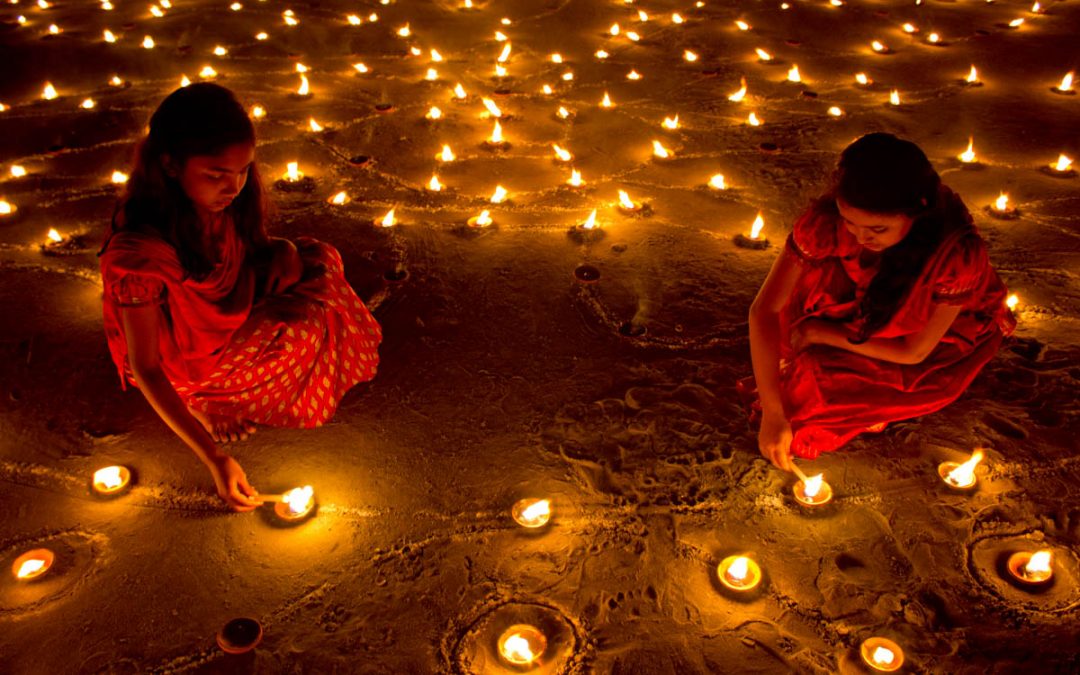
by Somya Devi | Oct 24, 2019 | Astrology, Conjunctions, Holy Days, Planets Changing Signs
The Sun and Moon will join at 10° sidereal Libra this Sunday night, October 24th, at 8:39 pm PDT. This Dark Moon night commemorates the Hindu holiday of Diwali, the festival of lights. October 27th will actually be the third but main night of celebration of this festival, which begins on Dhanteras on October 25th.
Libra cycle
The New Moon in Libra will begin a Libra cycle, compelling us to find balance, harmony, beauty, and compromise. Venus will have just left his own sign of Libra, a couple of hours before the New Moon, but has been strong there the last several weeks and during most of the Amavasya dark Moon phase leading up to the exact New Moon moment.
One thing to note about the Libra cycle is that the Sun is considered neecha or naturally debilitated there, so self-care becomes especially important during a Libra cycle. Since the Sun relates to our sense of strength and vitality, and Libra is the sign of compromising (or over-compromising) with others, it is possible that our own strength becomes diminished as we elevate the level of energy and attention we give to those around us. Caring for others doesn’t necessarily translate to depleted health, but it can when we overemphasize the outer world and others to the point of neglecting our own self-care.
This is a very important time of year to nourish ourselves, and our inner light, as the outer light is descending. At the beginning of this cycle, set an intention for a mindful self-care routine this month. Light some candles (or turn on your electronic ones) for Diwali on the Dark Moon night, and if possible, take some time each day to offer yourself some time to nourish and honor your personal light. Self-care practices can include yoga, meditation, chanting, art, or self-abhyangha (oil massage). You can also make some herbal tea to nourish yourself during this vata (cold and dry) season.
Swati Nakshatra
This New Moon joins the Sun in Swati nakshatra, a nakshatra that is also known to add to vata conditions, as it gives the power to scatter like the wind, so be aware of restlessness this Dark Moon night. It is ruled by Lord Vayu, wind embodied, and is symbolized by a young plant blowing in the wind, both flexible and strong amidst it. It can be translated as the “priest” or the “sword” and carries hidden spiritual potential from its association with Rahu. The male buffalo is the animal symbol for Swati nakshatra.
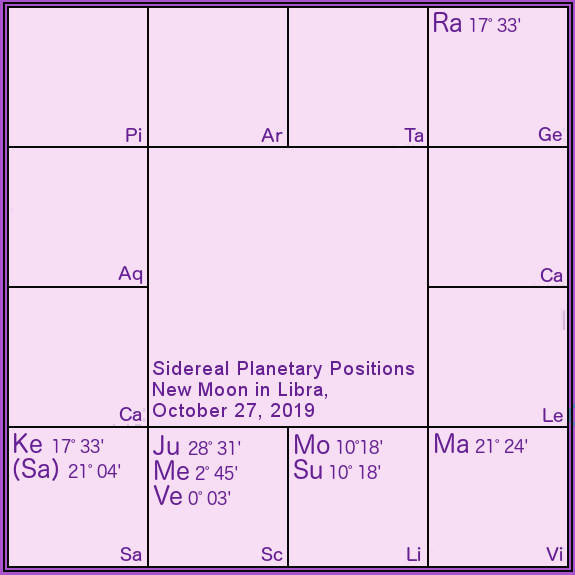
Venus, Jupiter and Mercury
These three benefic planets will be traveling together in sidereal Scorpio from October 26th through November 4th, when Jupiter transits into Sagittarius. The conjunction of these three planets creates a Sarasvati yoga during certain times of day, which could offer auspicious muhurtas (moments) for initiating artistic, educational or spiritual activities. If you were born with a Sarasvati yoga in your natal chart, you may find it more activated during these times.
Jupiter in Sagittarius
On November 4th, we will experience a major movement in the cosmos, as Jupiter transits from Scorpio into Sagittarius. Because the outer planets move slower, they spend longer in each sign, so this transit is important because it will take effect for over a year while Jupiter travels through his own sign. Generally that brings strength to a planet, but with the current conjunction with Saturn and Ketu, also in Sagittarius, we could see an intensification of strange and radical ideologies vying for their place on the world stage.
Dhanteras and Diwali
On the new Moon of the Hindu month of Ashwin (this month), we celebrate Diwali, the festival of lights. The festival begins this year on Friday, October 25th (North America), on the 13th waning Moon phase of the previous cycle. This day is known as Dhanteras, or Dhanvantari Tryodashi, the celebration of the birth of Lord Dhanvantari, the father of Ayurvedic medicine. If you practice any healing tradition, especially Ayurveda, this is a good day to give thanks and call in auspicious blessings to your healing path or practice.
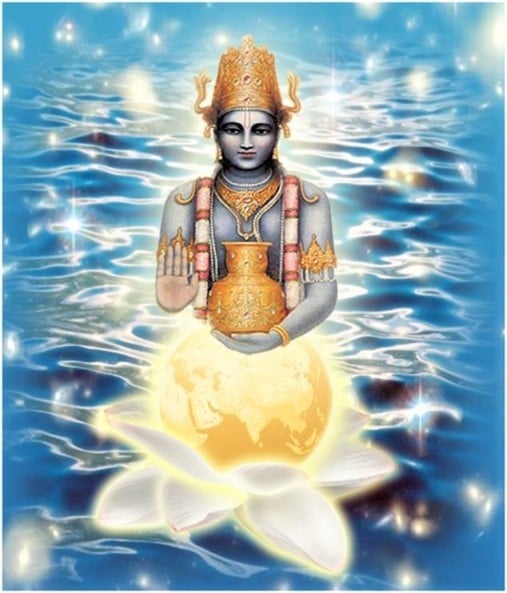
Diwali is strongly associated with the Goddess Laxmi, and is a powerful time to connect with her, calling in her blessings for both material and spiritual prosperity. Dhanteras commemorates the day that Lakshmi emerged from the milk ocean in Vedic lore. In India, it is customary to purchase metals on this day — anything from jewelry to new statues to kitchenware (excluding iron), especially silver and gold — as a part of celebrating Lakshmi and calling in more prosperity. The metals can then be offered to your altar and will absorb and amplify the benefits of worship performed over the few days of Diwali.
We celebrate Diwali while the days are getting noticeably shorter and darker, and it is a time to invite more light into our lives, our hearts, and our world. This festival celebrates the victory of light over darkness, which is something to rejoice in and have faith in, even if we can’t outwardly observe it sometimes. Creating positive vibrations internally is the best way to begin growing and spreading them externally.
Diwali also commemorates Lord Ram’s and Sita’s return from exile after fourteen years (a story from the Ramayana). Lord Ram embodies the highest qualities of dharma, devotion, compassion, courage, and leadership. Diwali is also the start of a new lunar cycle, so it’s a great time to go within and summon these qualities to awaken and live through you.
 Diwali (also seen as Divali, Deepawali or Deepavali) comes from the Sanskrit words deepa (light) and avali (row). It is traditional to light candles throughout Diwali (opt for electronic tea lights if you’re in a fire danger zone!), inviting the highest light into our homes and lives. The candles are lit to remind us of the inner divine light in us all. Though one flame can be used to light many others, it is not diminished by sharing its power of illumination. We can pray for the peace and happiness of all beings, and each one’s awareness of their inner light.
Diwali (also seen as Divali, Deepawali or Deepavali) comes from the Sanskrit words deepa (light) and avali (row). It is traditional to light candles throughout Diwali (opt for electronic tea lights if you’re in a fire danger zone!), inviting the highest light into our homes and lives. The candles are lit to remind us of the inner divine light in us all. Though one flame can be used to light many others, it is not diminished by sharing its power of illumination. We can pray for the peace and happiness of all beings, and each one’s awareness of their inner light.
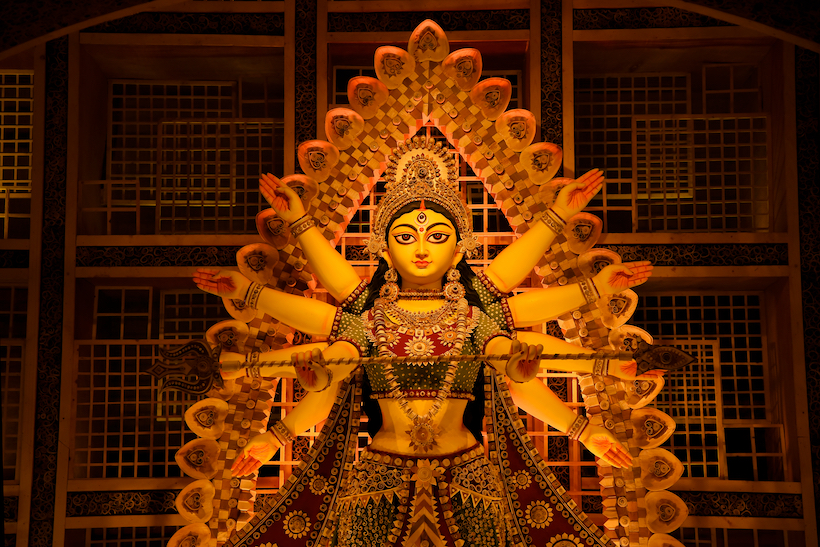
by Somya Devi | Sep 27, 2019 | Astrology, Conjunctions, Events, Holy Days, Planets Changing Signs
Tonight brings a dark Moon as the Moon joins the Sun in sidereal Virgo. Exact New Moon in Virgo will be at 11:26 am PT on Saturday, September 28th. This begins a Virgo cycle that will help us to connect with the earth, the feminine, and draw ourselves more inward as we enter the season of the Sun’s decent in the northern hemisphere.
Virgo Cycle
We’ve just passed the equinox on September 23rd, the time where night and day are of equal lengths, and we are now entering the yin season where the hours of darkness will exceed the hours of light. This first full lunar cycle begins in Virgo, a feminine earth sign, that encourages us to ground out some of the activity of summer and turn inwards as we come upon this darker season.
Virgo is also ruled by Mercury, the planet of the intellect, which will get us thinking about practicality and logistics this month. Have you planned your store for winter, getting together everything you need and tying up loose ends in the world before your period of inward attention and maybe even hybernation? Mercury is still technically joining the Sun and Moon in Virgo as we begin this cycle, but will be passing into Libra the next day. Venus and Mars also join in Virgo now, making our nights especially dark as these three stay close to the sun and only Jupiter and Saturn are visible. Venus remains debilitated in Virgo for just a few more days, until October 3rd.
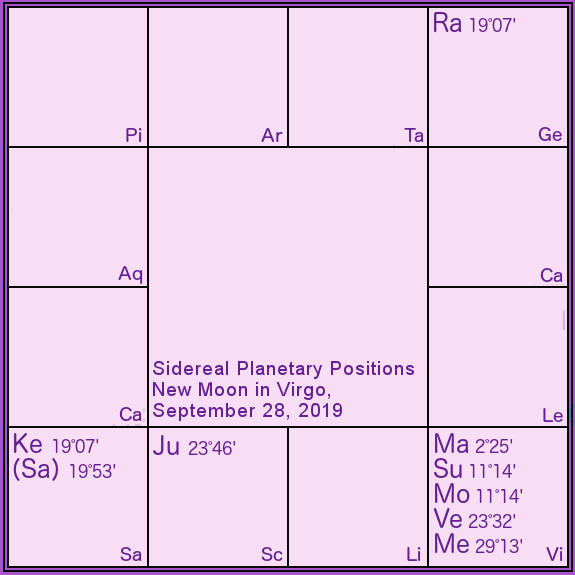
Hasta
This New Moon occurs with Sun and Moon in Hasta nakshatra, the sign of the hand. Hasta is a place that allows us to hone our skills, both manual and intellectual. It offers us a “craftiness,” whether literal, or of mind. This is a good time for getting into any hands-on work that requires dexterity, as well as for business dealings or other organization that requires tact and skill. Hasta is ruled by Savitar, the Sun God, while also linked to the Moon’s influence, and its animal is the female buffalo.
Maha Navaratri
The New Moon this month brings one of the largest Hindu festivals of the year, Maha Navaratri. Navaratri means “the nine nights,” and beginning with the first Moon phase after the dark Moon, the Goddess Devi is celebrated through many forms for the following nine nights and ten days. In North America Navaratri will be celebrated from September 29th through October 8th, with October 8th being the 10th day of Victory (an auspicious time for starting new endeavors, after 9 nights of worship). In some places Navaratri celebrates the goddess Durga in nine of her forms, while in other parts of India the festival commemorates Durga/Kali, Lakshmi, and Sarasvati for three nights each.
Devi is the creatrix, the warrioress, the nurturer, the purifyer, the protector. She can be found in the innocent and fertile maiden as well as the wise and learned crone. She is both the nurturing mother, and the one who gives “tough love.” The impassioned lover, the devoted bhakta, the disciplined yogini. We see Devi appear through us in innumerable manifestations. Through her many forms, she teaches us and offers us countless blessings–love, compassion, courage, learning, discipline, surrender, success, enlightenment, and bliss.
This festival is a time for honoring and celebrating the supreme feminine power in all her glory, and the many blessings she bestows upon us. Read more about Maha Navaratri 2019 here, and stay tuned for daily updates on how to connect with the many forms of the Goddess.
Kala Sarpa & Nodal Influences
This year’s festival could churn up even more internal difficulties than usual … offer them to the Goddess! We are currently under a Kala Sarpa cycle, with all planets to one side of the Rahu-Ketu axis, and will be in this alignment until October 6th. This can bring up more shadow energy and sticky spots than usual, especially if you are running a Rahu-Ketu dasha or have these planets prominently in your chart. It’s all the more reason to join the festivities and offer worship or some kind of spiritual practice during these days.
The good news on the nodal front — Saturn and Ketu will finally be separating a bit, and will leave their 1-degree proximity on October 1st! With Mean Node calculations, Ketu and Saturn have been joined within one degree of each other since April 25th! This will begin to slowly take some pressure off in the area of your life shown by Sagittarius, or those ruled by Saturn.
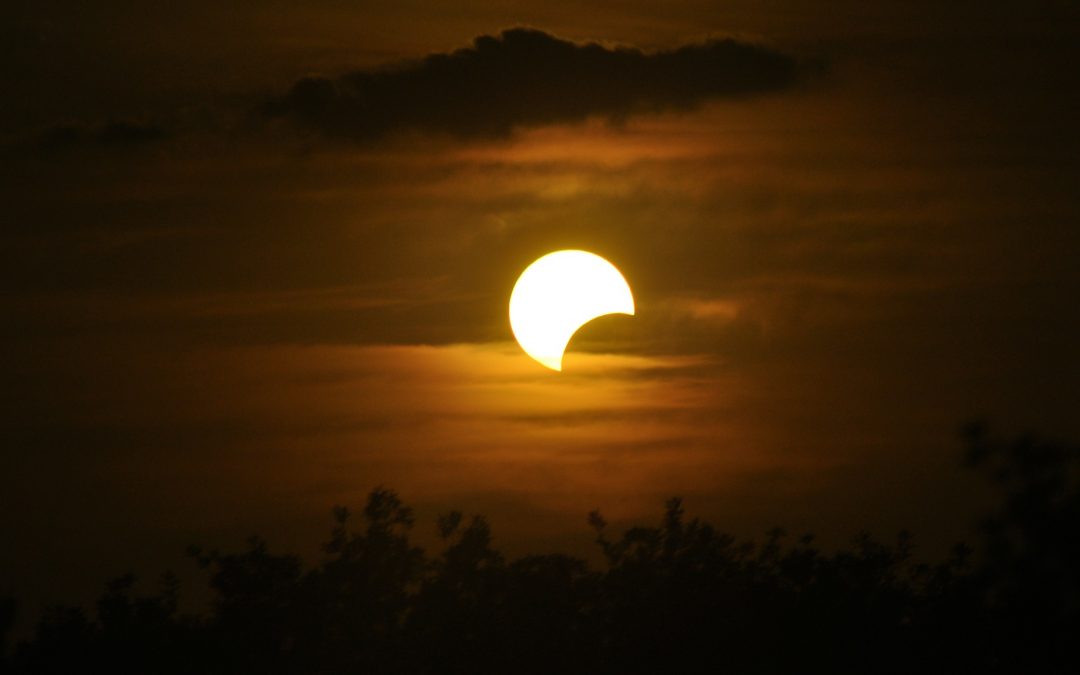
by Somya Devi | Jan 3, 2019 | Astrology, Conjunctions, Eclipses
The Moon is waning towards total darkness and will reach exact conjunction with the Sun for the “New Moon” moment on Saturday, January 5th, 2019, at 5:28 pm PST. The Sun and Moon will join at 21° sidereal Sagittarius, aligned closely with the center of the Milky Way galaxy, in Purva Ashada nakshatra. The Sun and Moon will be in close enough proximity with Ketu (at 3° sidereal Capricorn), to bring about the first eclipse of the year. The partial solar eclipse will occur over eastern Asia and the Pacific, reaching its maximum at 5:41 pm PST, and visible from eastern China, Mongolia, and Russia, as well as Japan, the Korean peninsula, and southwestern Alaska.
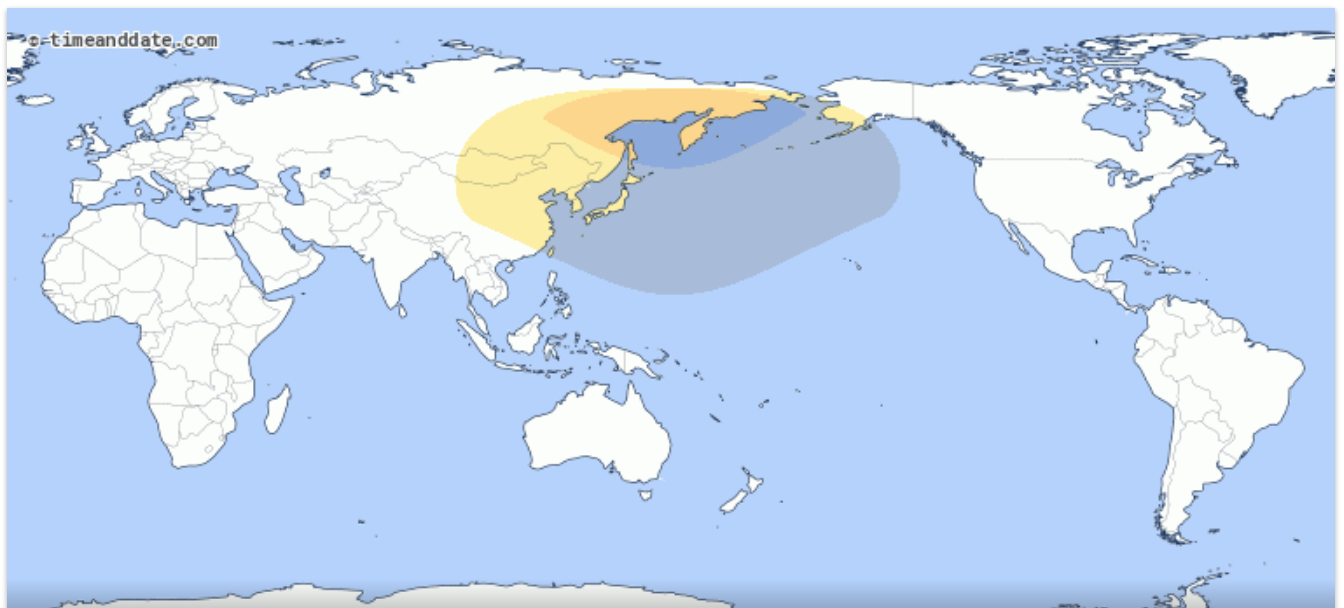
Sagittarius
This new Moon solar eclipse will occur in sidereal Sagittarius, setting the tone for the coming month with a Sagittarian mood. Sagittarius is an active fire sign ruled by Jupiter, the planet of principles and beliefs. This new Moon will bring forward a healthy dose of principles and opinions, but with the Sun partially blocked by the Moon’s shadow, we may feel overly emotional about these and at the same time, lacking the power to do anything. (You can also relate that sentiment with the area of life mentioned in the Forecast section below). Within Purva Ashada nakshatra, however, we may find more courage from within than seems readily at hand.
Purva Ashada
This nakshatra spans from 13°20′ to 26°40’ of sidereal Sagittarius, and means the former “invincible” or “unconquered.” It is ruled by Apah (or Apas), the water goddess. Its animal symbol is the male monkey, which brings a playful energy here. Its planetary ruler is Venus and thus also has associations with goddess Lakshmi. The three stars that make up this nakshatra in the night sky take the shape of a fan, and the fan is another symbol for this asterism.
Under its invincible nature, the Purva Ashada new moon is a powerful time to find our courage, despite the feelings of limitation that can be brought on by a solar eclipse. Through the symbol of the fan, we can see one who is adorned in luxury, or one who may hide behind a fan in humility or mystery, but there is a great power that can be hiding there, especially feminine power. The fan can be used to sustain us under pressure, bringing a cooling breeze that feels like the grace of god when the world gets too hot. Though our power may feel hidden, it is there to be tapped into with focus and dedication.
Saturn and Mercury
Saturn and Mercury both join this new Moon in Sagittarius. Saturn is going to have an even stronger role in our lives than usual in 2019, as he will be joining Ketu in close conjunction, within one degree, for over five months. Saturn in Sagittarius can help us to have not only the courage to do what we believe is right, but the stamina and dedication to get it done. Though we may feel a bit muddled by the eclipse (and the current combust nature of Saturn, so close to the Sun), Saturn’s determination will reveal himself more as the month goes on.
There will be a planetary war, however, between Saturn and Mercury, on the 12th and 13th of this month, when the two come within one degree of each other. When two planets are at war, contending for our attention in the same part of the sky, both will suffer, and the things they represent. With Mercury at war, our intellects will not feel as sharp, and it may be hard to pay attention to details or communicate clearly on these days. With Saturn at war, keeping our eye on long-term goals may be hard, and we may feel temporarily deflated and struggle at work. The four areas in your chart ruled by Saturn and Mercury may also suffer, or feel at odds with each other, during this time.
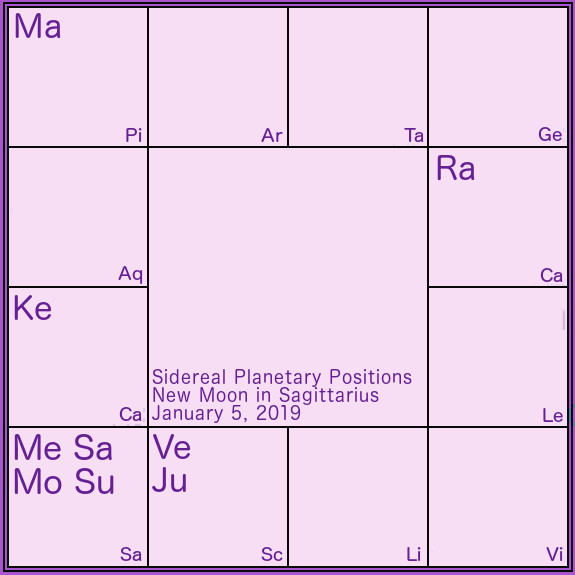
The Solar Eclipse
Though the eclipse may not be visible where you are, its effects are still tangible, and things are probably already gearing up with intensity in the area of your life indicated by Sagittarius. Though Rahu and Ketu are still in Cancer and Capricorn (since August of 2017), they are coming very close to transiting into Sagittarius and Gemini (which will happen in March), and this eclipse is giving us a taste of what is to come during the next nodal transit and the eclipses to occur in 2019 and 2020.
Forecast
Here are a few of the areas where challenges may be occurring due to this eclipse (and where you need to do the work), based on your Vedic rising sign (there can also be others, when examined specifically, or in a personal natal chart analysis):
Aries — education, faith, foreign travels
Taurus — sudden changes, upheaval, secrets coming to light
Gemini — partnerships, love, business relationships
Cancer — health issues, disputes, litigation, pets
Leo — children, wisdom, authority
Virgo — the heart, the mind, home, mother
Libra — siblings, will, skills
Scorpio — the family, wealth, the mouth
Sagittarius — self-identity, place in the world
Capricorn — loss, loneliness
Aquarius — community, friends, income
Pisces — career, social status
Please join me and my fellow astrologers on January 25th for the 2019 Jyotish Transit Summit Webinar. The webinar is free, and you can register through this link.
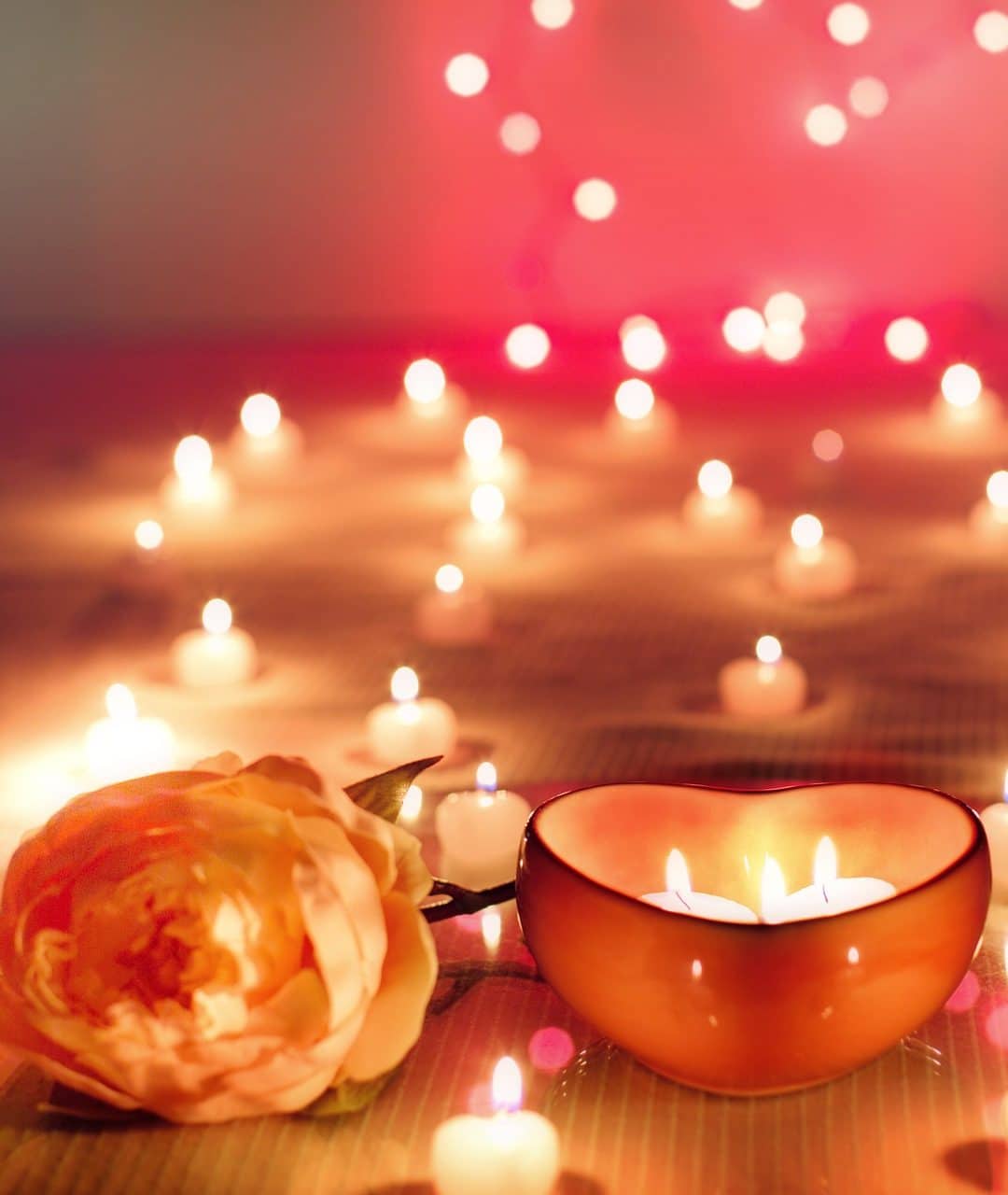
by Somya Devi | Nov 5, 2018 | Astrology, Conjunctions, Holy Days, Planets Changing Signs, Retrograde, Uncategorized
The Moon is waning towards total darkness as he approaches the Sun in late sidereal Libra. The dark Moon night of November 6th will precede the “new Moon” moment at 9:02 am PST on Wednesday, November 7th, when Sun and Moon align exactly in late Libra, in Vishakha nakshatra. This will begin a lunar cycle in the mood of Libra, and also bring in Diwali, the Hindu festival of lights. With Venus already powerful in the sky right now, this lunar cycle will cause us to focus even deeper on relationships, harmony, and happiness in our lives, and examine closely how we seek to fulfill our desires and find love on the human plane.
Libra
Libra is called Tula in Sanskrit meaning “scale” and is depicted as such in both eastern and western astrology. The natural seventh sign, opposite Aries, Libra is where we recognize our reflections, seeing the other who is opposite to us, and learning how to travel through life balancing our individual instincts with our need to create harmonize with those around us, often people with opposite will or nature.
Venus is the ruler of Libra, and Venus governs the human nature within us that seeks pleasure and happiness. While Mars gives us an instinct to assert ourselves strongly and survive, Venus brings in awareness of our pleasure centers and what is sensually pleasing in our field or bodies. A large part of the happiness we seek comes in the form of other people, coinciding with Libra’s “seventh sign” placement.
The problem with other people, however, is that they don’t always want exactly what we want. If it is a loved one, family member, or someone with whom we need to deal on a regular basis, we begin to notice that if we meet our individual desires completely at the expense of their happiness, we won’t actually be happy in the end. We need to learn how to compromise some so that both parties will be happy enough with a situation (and this is easier said than done). The flip-side is when we over-compromise, putting another’s desires entirely before our own, and ending up just as miserable as if we had completely ignored theirs.
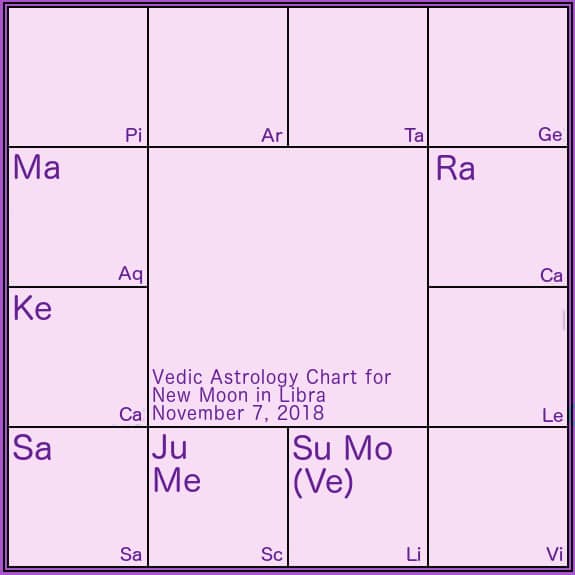
Venus
During this Libra cycle, Libra’s lord, Venus, is joining the Sun and Moon from the onset. He is strong as he travels through his own sign (sva), and even stronger due to his retrograde position (albeit only visible for a short time in the morning currently, since he is traveling so closely to the Sun). This position will give us extra support as we try to navigate the waters of compromise, and insight to be able to reflect back on what we are doing to try to attain happiness. It will help us to see what isn’t working, and gives us the opportunity to try to forge a new path moving forward.
It’s important to look at our own part in conflict and disharmony, and adopt a new attitude or method towards finding happiness and harmony. Venus comes to a halt and turns direct on the 15th, so be sure to take notice of all the insights being offered now and make your plan for how you will move forward.
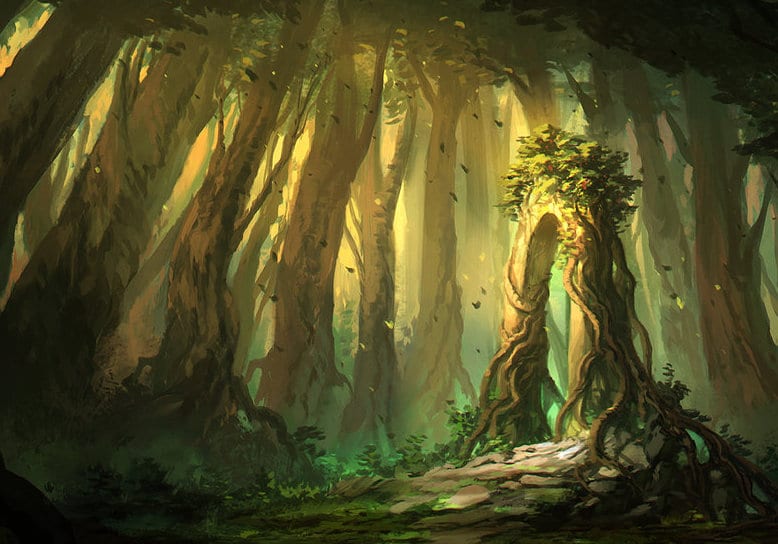 Vishakha
Vishakha
The Sun and Moon are coming together at 21° sidereal Libra for this New Moon, which aligns with the Vedic star-sign known as Vishakha, “the forked branches.” This star is sometimes represented by a set of forked branches, but often as a triumphal archway, indicating that success is possible after doing the difficult work of deciding between two paths. This is even often interpreted as a marriage archway. This star is ruled by the deities Indra and Agni, the chief of the gods and the fire deity, respectively, and can give us quite a bit of power and determination. Under Jupiter’s influence, this nakshatra can be helpful in learning to overcome conflicts and refining our method of compromise and success. Be aware, however, there can be some self-righteousness here due to Jupiter’s and Indra’s influences.
Sun
The Sun is considered neecha or naturally debilitated as he travels through Libra. Since the Sun relates to our sense of strength and vitality, and Libra is the sign of compromising (or over-compromising) with others, it is natural that our individual power can sometimes feel lessened while we elevate the level of energy and attention we give to those around us. Caring for others doesn’t necessarily translate to depleted health, but it can when we overemphasize the outer world and others to the point of neglecting our own self-care. This is a very important time of year to nourish ourselves, and our inner light, as the outer light is descending. Venus’ coincidence in Libra can help us to navigate this balancing act.
Diwali
Hindu culture recognizes this descending light outside, and it is on this New Moon (in the Hindu month of Ashwin) that we celebrate Diwali, the festival of lights. It is a time to invite more light into our lives, our hearts, and our world. This festival celebrates the symbolic victory of light over darkness. At this time we commemorate Lord Ram’s and Sita’s return from exile after fourteen years (story from the Ramayana). Lord Ram embodies the highest qualities of dharma, devotion, compassion, courage, and leadership. It is also a powerful time to connect to the Goddess Lakshmi, calling in her blessings for both material and spiritual prosperity.
Diwali (also seen as Divali, Deepawali or Deepavali) comes from the Sanskrit words deepa (light) and avali (row). It is traditional to light candles throughout Diwali, inviting the highest light into our homes and hearts. The candles are lit to remind us of the inner divine light in us all. Though one flame can be used to light many others, it is not diminished by sharing its power of illumination. We can pray for the peace and happiness of all beings, and each one’s awareness of their inner light.
 Dhanteras
Dhanteras
Monday, November 5th precedes Diwali with the holiday known as Dhanteras or Dhanvantari Tryodashi (commemorating the birth of Lord Dhanvantari). It is the thirteenth day of the waning Moon in the Vedic month of Ashwin. Lord Dhanvantari is known as the “father of Ayurveda” and the “physician of the Gods.” (Ayurveda is the system of natural medicine from India that is a sister science to yoga and Jyotish.) If you practice any healing tradition, especially Ayurveda, this is a good day to give thanks and call in auspicious blessings to your healing path or practice.
This day also marks Dhanteras, the first day of the Diwali festival. It commemorates the day that Lakshmi emerged from the milk ocean in Vedic lore. In India, it is customary to purchase metals on this day — anything from jewelry to new statues to kitchenware (excluding iron), especially silver and gold — as a part of celebrating Lakshmi and calling in more prosperity. The metals can then be offered to your altar and will absorb and amplify the benefits of worship performed over the few days of Diwali.
Mars-Ketu Separation
After six long months of conjunction in sidereal Capricorn, Mars and Ketu are finally separating. On November 5th Mars leaves Capricorn and crosses over into Aquarius. This has been a complicated transit, as Mars journeyed through his sign of exaltation, strengthening our courage and will, but was simultaneously plagued by Ketu’s fear and confusion.
With a retrograde stint topped with a set of three eclipses in the summer, we had a lot of time to try to understand our deepest fears and how they influence our courage and will (especially in areas of your life ruled by Mars or aligned with Capricorn). Moving forward, we will feel some of the pressure lift from these areas, and hopefully we were able to glean a lot of learning from the visible shadows presented throughout this transit.
Personal readings are available here to help you to better understand your relationship with each planet and how the current transits may affect you.

by Somya Devi | Oct 17, 2017 | Astrology, Conjunctions, Holy Days, Uncategorized
In this Kali Yuga, it almost always feels like we could use a little more light in the world, but especially around this time of year when the days are getting shorter and darker (northern hemisphere bias). The last few months seem to have piled on more natural disasters than usual, although sometimes it feels like this may be becoming the norm. This New Moon brings the Hindu festival of Diwali, which is a celebratory time to invite more light into our lives and into the world.
The darkest Moon time, which begins our next lunar cycle, occurs at 12:12 pm PDT this Thursday, October 19th. The new cycle begins with Sun and Moon joined in sidereal Libra, with Mercury and Jupiter there as well. Libra is a sign about creating more balance (which presents a bit of a challenge with the imbalanced appearance of the chart for this New Moon). It falls in the Vedic nakshatra of Chitra, a star-sign that enhances our opportunity to bring beauty and harmony in the world.
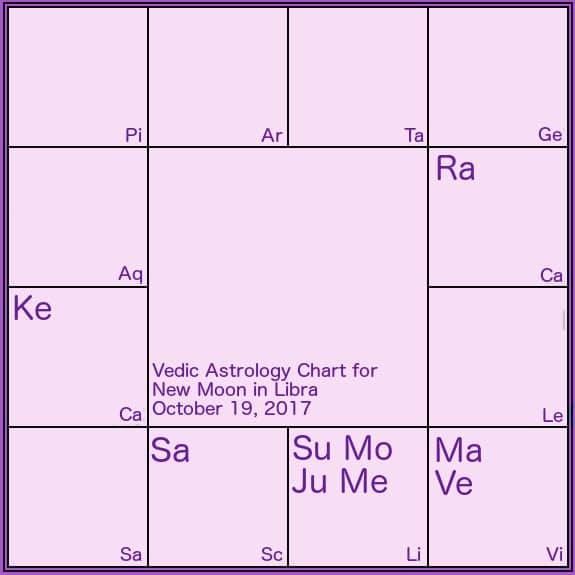
Libra
Libra is an air sign where we bring the principles of Venus into active expression. Venus is the planet of beauty, desire, nature, and human love, so the Libra cycle will encourage us to be more creative, connect with nature, and nurture our relationships. As an air sign (a bit intellectual, and inspiring movement), we will seek ways to balance or re-balance relationships throughout this cycle. Both Jupiter and Mercury are also positioned in Libra, close to the Sun and Moon at this time, which adds the influences of our higher beliefs as well as our analytical minds to our creative endeavors this month.
Debilitated Venus
Venus itself, the ruler of Libra, is currently transiting Virgo, his sign of debilitation. Debilitated Venus doesn’t necessarily translate as “relationships will be bad,” but it adds a highly intellectual, analytical, and practical motivation to the planet of pleasure and beauty. This is the opposite position to exalted Venus in Pisces, which we experienced for four months earlier this year (February through May), when we felt inspired to align our desires and relationships with our highest beliefs, principles, and purpose. Now, with Venus in Virgo, we are prompted to scrutinize all the little details of our relationships and pleasurable pursuits, and make sure that they are serving some practical need for us on the earth plane. We may also be scrutinizing our partners, or others around us, and getting caught up around the nuances of language or ideas. With Venus ruling this upcoming lunar cycle, and Mercury joining closely to the Sun and Moon at its start, desire for practicality will be strong this month.
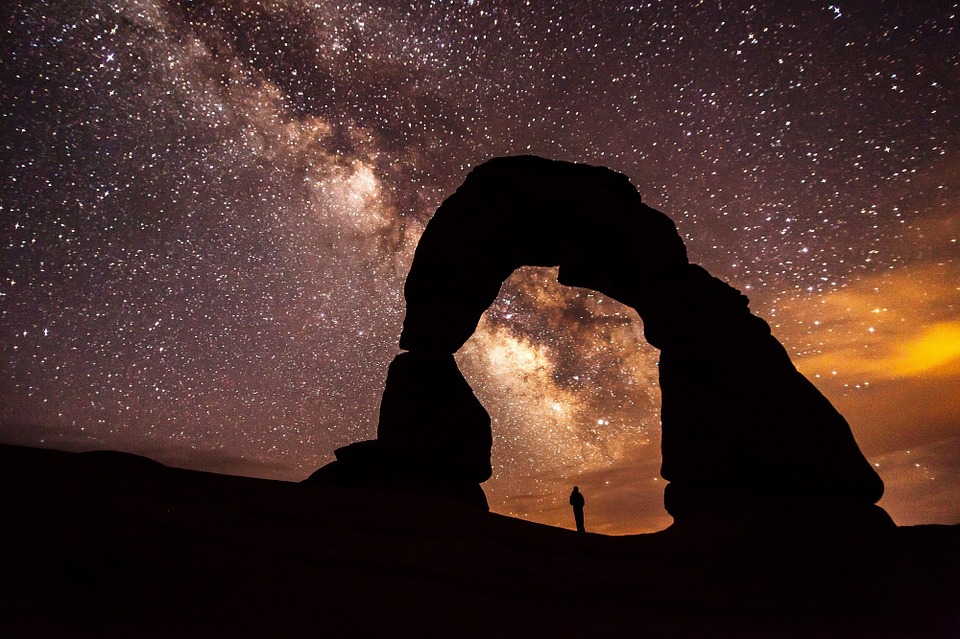 Chitra
Chitra
The Vedic nakshatra where this lunar cycle begins is Chitra, “the brilliant.” This bright star in Virgo (Chitra bridges Virgo and Libra) is ruled by Vishvakarma, the deity known as the celestial architect. Imagine that energy of one who has the ability to place all the stars in the sky and set them in perfect motion … that type of both precise and artistic energy is what we are able to call in this month. There is a powerful creative potency here, and a great potential for improving relationships. It is also an supportive energy for organizing, repairing, or redesigning your home space.
Diwali
On the new Moon of the Hindu month of Ashwin (this month), we celebrate Diwali, the festival of lights. The festival actually began on Monday, the 16th (North America), the 13th waning Moon phase of the previous cycle. This day is known as Dhanteras, or Dhanvantari Tryodashi. Buying gold or silver (or any metals) on Dhanteras is widely practiced in Hindu culture. It is also the celebration of the appearance of Lord Dhanvantari, the father of Ayurvedic medicine. This day, and Diwali in general, is an excellent time for nurturing and calling in blessings for any type of healing or healing practice.
Diwali is a time to invite more light into our lives, our hearts, and our world. This festival celebrates the victory of light over darkness, which is something to rejoice in and have faith in, even if we can’t outwardly observe it sometimes. The positive vibrations we create internally are the only place to start for growing and spreading them externally. It is a powerful time to connect to the Goddess Lakshmi, calling in her blessings for both material and spiritual prosperity.
This holiday also commemorates Lord Ram’s and Sita’s return from exile after fourteen years (story from the Ramayana). Lord Ram embodies the highest qualities of dharma, devotion, compassion, courage, and leadership. Diwali is also the start of a new lunar cycle, so it’s a great time to go within and summon these qualities to awaken and live through you.
Diwali (also seen as Divali, Deepawali or Deepavali) comes from the sanskrit words deepa (light) and avali (row). It is traditional to light candles throughout Diwali, inviting the highest light into our homes and hearts … but in consideration of the destructive wildfires raging in California right now, I’m using electronic tea lights this year.
The candles are lit to remind us of the inner divine light in us all. Though one flame can be used to light many others, it is not diminished by sharing its power of illumination. We can pray for the peace and happiness of all beings, and each one’s awareness of their inner light.
Sun in Libra
It is pertinent to remember and to celebrate and call forth our inner light during this particular Dark Moon time, because the Sun, the planet of our inner power, strength, and divine light, is also in his sign of “debilitation,” in Libra.
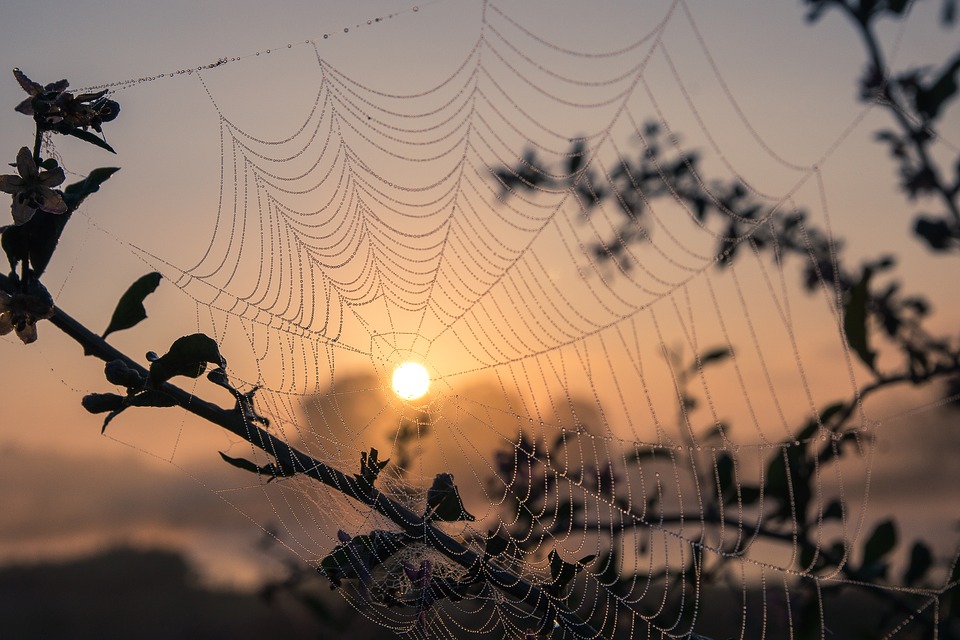
Since Libra is the sign of balance and relationships, we often give a lot of our personal power to our relationships with others when Sun is in Libra. We may try too hard to care for others, forgetting to nourish the divine spark in ourselves, or we may simply feel depleted by trying to balance too much in life, losing touch with our personal strength and vitality.
At the beginning of this cycle, set an intention for a mindful self-care routine this month. Light some candles (or turn them on) for Diwali on the Dark Moon night, and if possible, take some time each day to offer yourself some time to nourish and honor your personal light. Self-care practices can include yoga, meditation, chanting, art, or self-abhyangha (oil massage). You can also make some herbal tea to nourish yourself during this vata (cold and dry) season.
Kala Saarpa
The imbalance of the chart that I was talking about is referring to the ongoing Kala Saarpa yoga we see, wherein all seven physical planets are on one side of the nodal Rahu-Ketu axis. With these planets to one side of the nodes, the subconscious shadow energy (similar to eclipse energy) becomes more present, and a lot of unresolved business may arise. There is more agitation of the environment in general. This chart is particularly imbalanced, with the Sun, Moon, Jupiter and Mercury halfway between the nodes, and the other planets joining them on either side. As we enter this darker time of year, it is especially important to keep up our consciousness development and self-improvement practices, so as not to be ruled by the unconscious forces within.
Diwali is a potent opportunity to set this conscious intention, and to call forth more light and love into our hearts, and then to spread it out into the world! With so much trauma and disaster occurring all over the planet, our light, love, and service are needed now more than ever. No matter how small a part we can play, let us do what we can to increase harmony on and with the planet.
Ram Ram
You can click here to discover your specific strengths and challenges through a personal Vedic astrology chart reading with me.
Save
Save
Save
Save

 Diwali (also seen as Divali, Deepawali or Deepavali) comes from the Sanskrit words deepa (light) and avali (row). It is traditional to light candles throughout Diwali (opt for electronic tea lights if you’re in a fire danger zone!), inviting the highest light into our homes and lives. The candles are lit to remind us of the inner divine light in us all. Though one flame can be used to light many others, it is not diminished by sharing its power of illumination. We can pray for the peace and happiness of all beings, and each one’s awareness of their inner light.
Diwali (also seen as Divali, Deepawali or Deepavali) comes from the Sanskrit words deepa (light) and avali (row). It is traditional to light candles throughout Diwali (opt for electronic tea lights if you’re in a fire danger zone!), inviting the highest light into our homes and lives. The candles are lit to remind us of the inner divine light in us all. Though one flame can be used to light many others, it is not diminished by sharing its power of illumination. We can pray for the peace and happiness of all beings, and each one’s awareness of their inner light.









 Vishakha
Vishakha

 Chitra
Chitra